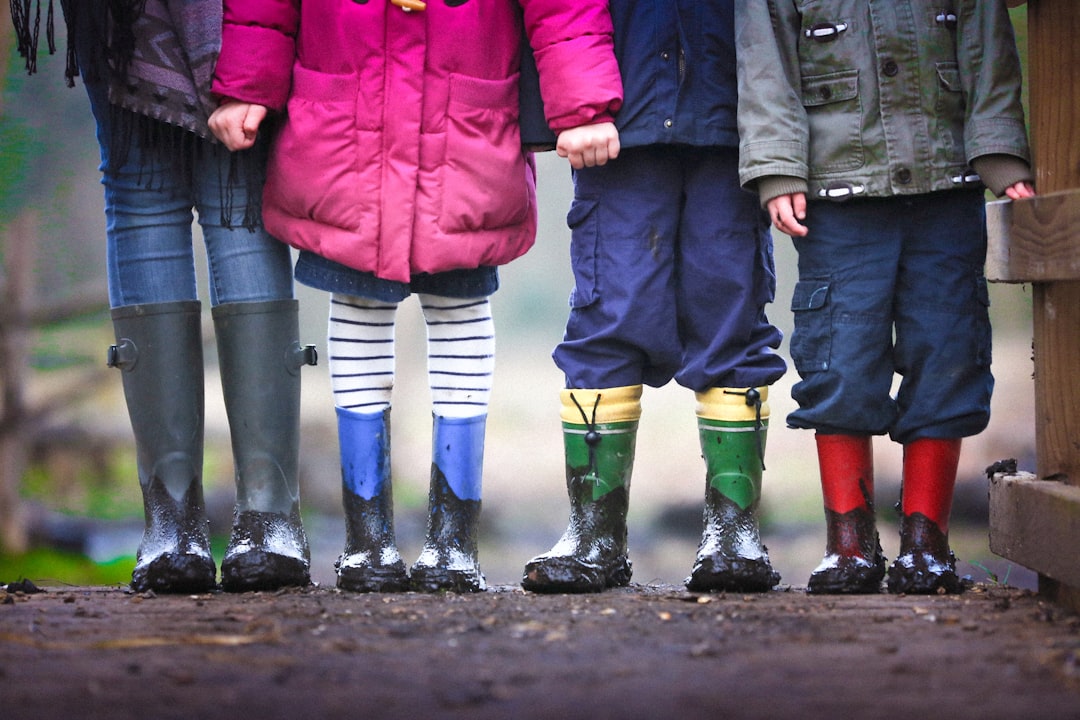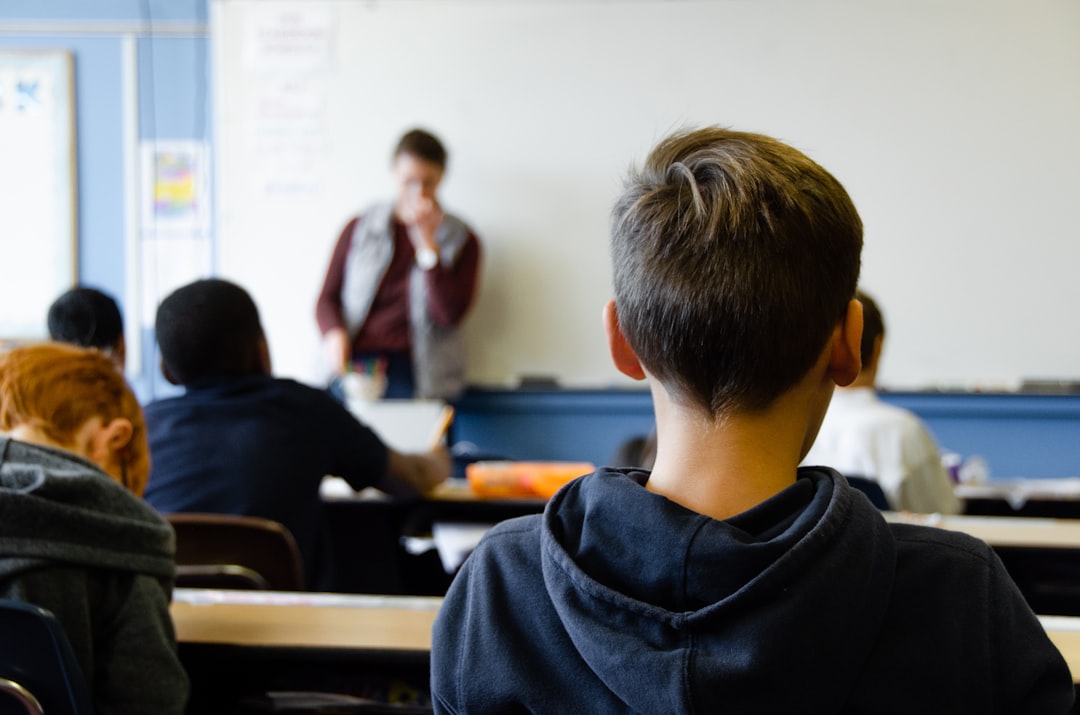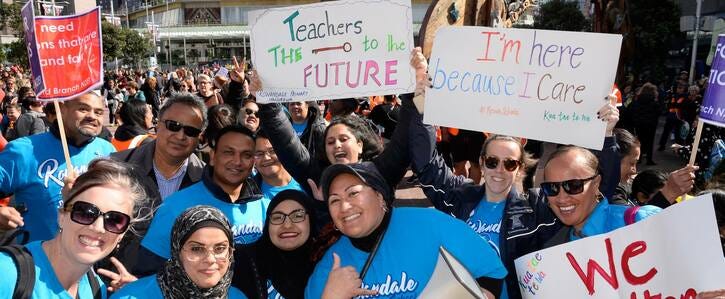Up to 50,000 teachers and principals will strike around Aotearoa on Thursday. As part of my ‘Explainer’ series, I spoke to NZEI Te Riu Roa president Mark Potter to get a better idea of what is going on so parents can choose whether or not to support teachers in their strike action.
Hi Mark. Can you tell me: Why are the teachers striking?
Primary teachers, principals and kindergarten teachers are striking because we need the government to take our demands for change seriously. We’ve rejected two offers from the government because they haven’t met our asks. Striking is a last resort, so it’s an indication of just where we’re at – breaking point.
What exactly do ya’ll want?
Primary teachers want better resourced support staffing in primary schools which means more teacher aides, more available relief teachers, and better funding systems for children with high needs. Some of these issues may fall outside collective bargaining, but the government can take steps towards fixing them through recognising our claims that were made to try and alleviate some of the immediate concerns.
We want lower teacher-to-student ratios so that the teachers can better support the specific learning needs of each child. Ratios are an issue in primary and kindergarten.
We want a pay rise that shows that teachers are valued so that we can retain experienced staff and attract new trained teachers to an aging workforce. Boards are struggling to fill principal roles at present because the demands of the job are so great that principals are leaving the workforce due to burnout.
We’d like to see the reliever pay cap lifted. Currently relief teachers’ pay in kindergarten and primary is capped at level 6 when they are some of the most experienced teachers. This has created a relief teacher shortage, which means that if teachers get sick or want to use their classroom release time, there is often no one to replace them. This adds enormous pressure to a teacher to always be there, even when they are sick. Obviously Covid-19 has made this situation even worse.
Other issues kindergarten teachers feel need addressing include sick leave, time for planning and the recognition of kaiako Māori in early childhood education.

Critics are saying the pay rise was significant…was it?
The pay increase on offer is approximately half of CPI. We would like a pay rise that gets as close to meeting real increases in the cost of living as possible. Primary teachers also took a significant step forward three years ago in terms of pay parity and paying teachers properly as a profession. We can’t afford to lose ground this year when everyone is facing cost-of-living concerns.
For kindergarten teachers, they want to see an offer that also delivers quality conditions. However, we are asking that head teachers’ pay reflect their additional leadership mahi. Currently all the additional responsibilities of pedagogical leadership and performance and budget management are paid only an extra $52.62 a week.
Let’s talk about sick leave and Covid-19, what has it been like for teachers?
It’s been really hard. The issues we’re talking about have been around since before Covid, and the pandemic only amplified them. Educators are near burnout from the disruptions of the last three years.
For kindergarten teachers, sick leave is a big issue and we think it’s a relatively easy one to fix. Anyone who’s had their child in early childhood education knows that this is the age at which children are building their immunity, which means sharing all their illnesses with their teachers. Exposure to illness and burnout is high.
Any teachers who are also parents see their sick leave wiped out when they take time off to look after their own children. Not having enough sick leave means teachers must take unpaid leave, or risk coming to work sick. Currently kindergarten teachers have 10 days of sick leave available to them, they are only asking for an increase to 15 days.
Primary school children were resourced at 30 percent less than their secondary counterparts - what does this mean for kids? What’s the impact?
The needs of children are complex at all levels of education. By receiving 30% less than their secondary siblings, primary school children will have fewer teachers with fewer resources to provide for their education. This will mean that their principals will have less support to lead the school, tamariki will have less support for learning and larger classes. Fewer specialist teachers will be available to support children’s individual challenges and passions.

Can the government afford to give teachers what they’re asking for?
Perhaps the question is – can they afford not to?
Teachers shape and educate our future workforce and leaders. The broader question is what sort of society do we want? Is it one where our children are properly supported through all stages of their education by quality, experienced teachers? Or is it one where children with complex needs are ignored, where teachers cannot teach all the learners in their classrooms because of the ratios and the fact that they’ve been so undervalued?
Did teachers strike recently?
Primary teachers went on strike in 2019 to achieve pay parity with secondary [school teachers]. Under New Zealand law, employees can only take industrial action during negotiations for a collective bargaining agreement or for health and safety reasons. So, you will only ever see them on strike when they’re in bargaining for improved working conditions. It is always a last resort. We didn’t really want to get here, but it’s the only way the government will listen.
Kindergarten teachers haven’t been on strike in a long time, so you can tell things are serious.
How can parents support teachers?
Parents can support teachers telling them and the public that they support the teachers’ asks for better pay and conditions. The louder they can say this the better!
[Parents can also sign this letter to Hon Jan Tinetti - Emily]
Teachers understand the disruption the strike will cause parents and whānau on Thursday. Our message to whānau is that we never undertake strike action lightly. We need things to change and this is the clearest way we can show how serious we are.
The fact is that teachers’ classroom conditions are children’s learning conditions. The reason we’re going on strike is to improve educational outcomes for our children.




Kia ora Emily, thank you for using your platform to amplify NZEI's message. One small correction, the figure of 50,000 in the first paragraph includes secondary schools as well. We're in a different union with different issues. NZEI represents 30,000 primary and kindergarten/ece teachers, whereas PPTA represents secondary school teachers. Striking together increases visibility so we're glad to have our NZEI colleagues along.
Does anyone know if there's a march to Parliament? I'd like to take my kids along if there is, because effects on teachers are effects on kids too.